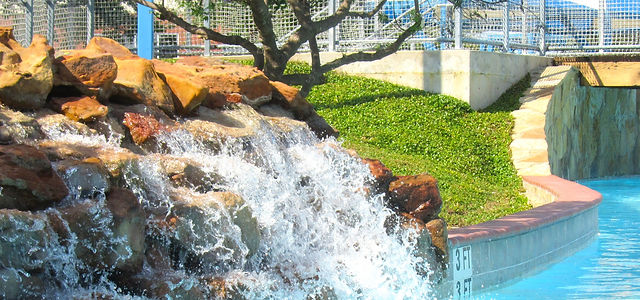
Understanding the operational processes of carbonated beverage manufacturing facilities involves analyzing various aspects, from raw material sourcing and mixing to bottling, quality control, and distribution. A practical example could involve examining the specific machinery used in filling bottles, the methods employed for carbonation, or the systems in place for ensuring hygiene and product consistency.
Gaining this knowledge is critical for numerous stakeholders. For plant managers and engineers, it facilitates optimization of production lines and reduction of operational costs. Quality control specialists benefit through improved oversight and the ability to identify and rectify potential issues promptly. Furthermore, a deep comprehension of these processes can aid historical analysis of the industry’s evolution, enabling insights into technological advancements and shifts in consumer preferences over time.
This foundational understanding serves as a springboard for exploring key topics related to carbonated beverage production, including supply chain management, sustainability initiatives, and the impact of market trends on manufacturing processes. Each of these areas warrants in-depth analysis to gain a complete picture of the complexities and challenges faced by the industry.
1. Ingredients Sourcing
Ingredient sourcing represents a critical initial stage in soft drink production. A comprehensive understanding of this process is fundamental to analyzing the overall operations of a beverage facility. The origin and quality of ingredients directly impact the final product’s taste, consistency, and safety.
-
Supplier Selection
Choosing appropriate suppliers is paramount. Factors to consider include ingredient quality, reliability of supply chains, ethical sourcing practices, and cost-effectiveness. For instance, a manufacturer might prioritize a local sugar supplier committed to sustainable farming methods over a less expensive, internationally sourced alternative. This decision, documented and analyzed, reveals a company’s values and potential impact on the final product and its market positioning.
-
Quality Control of Raw Materials
Rigorous quality checks upon ingredient arrival are essential. These checks might involve laboratory analyses to verify purity, consistency, and absence of contaminants. Detailed records of these analyses contribute valuable data for tracking product quality and identifying potential sources of variation. For example, consistent testing of incoming water purity ensures the final product meets required safety standards.
-
Inventory Management
Effective inventory management is crucial for ensuring uninterrupted production. This involves forecasting ingredient needs, optimizing storage conditions to maintain quality, and minimizing waste. Analyzing inventory turnover rates can illuminate the efficiency of production planning and potential bottlenecks. For instance, a large stockpile of a particular ingredient might indicate over-ordering or potential issues with upcoming production runs.
-
Cost Optimization
Balancing ingredient quality with cost-effectiveness is a constant challenge. Negotiating favorable contracts with suppliers, exploring alternative ingredients, and minimizing transportation costs all play a role. Analyzing ingredient costs in relation to the final product price can reveal profit margins and inform strategic decisions regarding pricing and sourcing.
By exploring these facets of ingredient sourcing, a deeper understanding of the complexities and interdependencies within the soft drink manufacturing process emerges. These insights are invaluable for evaluating the overall efficiency, sustainability, and ethical considerations inherent in the industry.
2. Mixing and Carbonation
Analyzing the mixing and carbonation stage within a soda production facility is crucial for understanding the overall operation. This stage significantly influences the final product’s taste, consistency, and quality, thereby impacting consumer perception and brand reputation. A detailed examination of this process unveils critical insights into the manufacturer’s commitment to quality control and product consistency.
-
Precise Formulation
Maintaining consistent flavor profiles requires precise measurement and mixing of ingredients. This involves adherence to strict formulas and leveraging automated systems to minimize variations. Slight deviations in ingredient ratios can lead to perceptible differences in taste, potentially affecting consumer acceptance. Analyzing the precision of these processes provides insights into a facility’s quality control standards and commitment to product consistency.
-
Carbonation Methods
The method of carbonation employed influences the final product’s mouthfeel and overall sensory experience. Different methods, such as injecting carbon dioxide directly into the beverage or pre-carbonating water before mixing, can result in varying levels of carbonation and bubble size. Examining these methods provides insights into the desired product characteristics and the technical capabilities of the facility.
-
Temperature Control
Temperature plays a critical role during mixing and carbonation. Maintaining specific temperature ranges is crucial for achieving optimal ingredient solubility, carbon dioxide absorption, and preventing microbial growth. Analyzing temperature control mechanisms reveals a facility’s adherence to food safety standards and its ability to maintain product quality.
-
Filtration and Purification
Following mixing and carbonation, filtration processes are essential for removing any remaining particulate matter or impurities, ensuring product clarity and stability. Analyzing the filtration methods employed provides insights into the manufacturer’s commitment to producing a visually appealing and high-quality product. For example, using advanced filtration techniques can extend shelf life and prevent sediment formation.
Understanding these facets of mixing and carbonation provides a deeper comprehension of the complexities within a soda production facility. This knowledge contributes to a more complete analysis of the overall operation, encompassing not only technical processes but also the manufacturer’s focus on quality, consistency, and consumer satisfaction.
3. Bottling and Packaging
Bottling and packaging represent a critical stage in the soft drink manufacturing process, directly impacting product preservation, consumer perception, and brand recognition. Understanding this stage is integral to “reading” or analyzing the overall effectiveness and efficiency of a soda works. The choices made in this phase influence product shelf life, consumer safety, and brand identity. For example, selecting specific bottle materials impacts both the product’s perceived quality and its environmental footprint.
Several factors within bottling and packaging warrant close examination. Container material selection, whether glass, plastic, or aluminum, affects product preservation, transportation costs, and recyclability. The filling process itself requires precision to maintain consistent volume and minimize product loss. Labeling and packaging aesthetics communicate brand identity and attract consumers. Finally, packaging design influences transportation efficiency and storage requirements. Analyzing these elements provides insights into a company’s strategic priorities, cost management strategies, and commitment to sustainability. For instance, the adoption of lightweighting techniques in plastic bottles reduces material usage and transportation costs, reflecting a focus on efficiency and environmental responsibility.
In conclusion, bottling and packaging are not merely the final steps in production; they are integral components reflecting broader operational strategies. Understanding the choices made in this stage offers crucial insights into a company’s overall approach to production, marketing, and sustainability. Analyzing these choices contributes significantly to a comprehensive understanding of the intricacies within a soda works. Challenges such as minimizing packaging waste and adapting to evolving consumer preferences regarding packaging formats remain key considerations for manufacturers. Addressing these challenges requires innovation and a commitment to sustainable practices.
4. Quality Control Testing
Quality control testing forms an indispensable component of comprehending soda works operations. “Reading” a soda works, or understanding its efficacy and efficiency, necessitates a thorough analysis of its quality control measures. These measures directly influence product consistency, consumer safety, and brand reputation. Effective quality control serves as a preventative measure, minimizing potential product defects and ensuring adherence to regulatory standards. For example, regular microbiological testing prevents the release of contaminated products, protecting consumer health and safeguarding the company’s reputation.
Several key aspects of quality control testing warrant in-depth examination. These include analyses of raw materials to verify purity and consistency, in-process checks at critical points during production to monitor parameters like carbonation levels and temperature, and final product testing to evaluate attributes such as flavor, color, and packaging integrity. Each testing phase offers crucial data points for evaluating the effectiveness of overall operations. For instance, consistent deviations in carbonation levels might indicate equipment malfunction or inconsistencies in the carbonation process, requiring immediate corrective action. Furthermore, stringent quality control testing facilitates adherence to industry standards and regulatory requirements, minimizing legal risks and bolstering consumer trust. The implementation of Hazard Analysis and Critical Control Points (HACCP) principles exemplifies a proactive approach to quality management, aiming to identify and mitigate potential hazards throughout the production process.
In conclusion, quality control testing is not merely a regulatory requirement but a crucial element for optimizing production processes and maintaining brand integrity. A comprehensive understanding of these testing procedures provides invaluable insights into the overall efficiency, reliability, and ethical commitments of a soda works. Challenges such as adapting to evolving regulatory standards and implementing advanced testing technologies remain crucial considerations for manufacturers. Effectively addressing these challenges contributes to enhanced product quality, consumer safety, and sustainable business practices.
5. Distribution Logistics
Distribution logistics plays a crucial role in the comprehensive understanding of soda works operations, often referred to as “reading” a soda works. Effective distribution networks are essential for connecting production facilities with consumers, ensuring timely product delivery while maintaining product quality and minimizing costs. Analyzing distribution logistics provides valuable insights into a company’s market reach, operational efficiency, and ability to adapt to changing market demands. For example, a company’s reliance on a centralized distribution center versus regional hubs reveals strategic choices regarding inventory management and transportation costs. The efficiency of distribution networks directly impacts product availability and freshness, influencing consumer satisfaction and brand loyalty. Delayed deliveries or stockouts can negatively impact sales and damage brand reputation, highlighting the importance of robust distribution logistics.
Several key aspects of distribution logistics warrant examination within the context of “reading” a soda works. Transportation methods, warehousing strategies, inventory management systems, and the use of technology for tracking and optimization all contribute to the overall effectiveness of distribution networks. Choosing between truck, rail, or sea transport depends on factors such as distance, cost, and product shelf life. Warehouse location and capacity influence delivery speed and storage costs. Effective inventory management minimizes waste and ensures product availability. Furthermore, the integration of technology, such as route optimization software and real-time tracking systems, enhances efficiency and transparency throughout the distribution process. Analyzing these elements provides a deeper understanding of a company’s operational capabilities and its ability to respond to market fluctuations and consumer demand. For instance, the adoption of just-in-time delivery systems minimizes warehousing costs and reduces the risk of product expiration, showcasing a commitment to efficiency and cost optimization.
In conclusion, distribution logistics represents a critical component of understanding the complexities of soda works operations. Analyzing distribution networks reveals key insights into a company’s strategic priorities, operational efficiency, and ability to meet market demands. Challenges such as optimizing delivery routes, managing fuel costs, and integrating sustainable practices into distribution networks remain critical considerations. Addressing these challenges contributes to enhanced supply chain performance, improved customer satisfaction, and a more sustainable and resilient business model. Therefore, understanding distribution logistics is essential for a comprehensive analysis of soda works operations, providing a nuanced perspective on the industry’s dynamics and challenges.
Frequently Asked Questions
This FAQ section addresses common inquiries regarding the complexities of carbonated beverage manufacturing, providing concise and informative responses.
Question 1: How does ingredient sourcing impact the final product?
Ingredient origin and quality directly influence taste, consistency, safety, and cost. Sourcing decisions reflect a manufacturer’s priorities regarding sustainability, ethical practices, and product quality.
Question 2: What is the significance of the mixing and carbonation stage?
Precise formulation, carbonation methods, and temperature control during mixing directly impact the final product’s flavor profile, carbonation level, and overall sensory experience. This stage is critical for achieving consistent product quality and consumer satisfaction.
Question 3: Why is bottling and packaging more than just a final step?
Bottling and packaging choices affect product preservation, consumer perception, and brand recognition. Material selection, filling precision, and labeling aesthetics reflect a company’s strategic priorities and commitment to sustainability.
Question 4: What role does quality control testing play in soda production?
Rigorous quality control testing ensures product consistency, consumer safety, and adherence to regulatory standards. Testing occurs throughout the production process, from raw material analysis to final product evaluation.
Question 5: Why is distribution logistics important in the beverage industry?
Efficient distribution networks ensure timely product delivery while maintaining quality and minimizing costs. Transportation methods, warehousing strategies, and inventory management systems contribute to overall operational efficiency.
Question 6: What are some current challenges faced by the carbonated beverage industry?
The industry faces challenges related to sustainability, evolving consumer preferences (e.g., health consciousness), fluctuating ingredient costs, supply chain disruptions, and increasing regulatory scrutiny. Adaptability and innovation are essential for navigating these challenges.
Understanding these key aspects of soda production provides a more complete picture of the industry’s intricacies and challenges. Analyzing these elements allows for informed assessments of a company’s operational efficiency, commitment to quality, and strategic approach to the market.
Further exploration of specific topics within carbonated beverage manufacturing can provide even more detailed insights. For example, examining the impact of specific regulatory changes or analyzing the lifecycle assessment of different packaging materials could provide a nuanced understanding of current industry trends and challenges.
Tips for Analyzing Carbonated Beverage Operations
Understanding the intricacies of carbonated beverage production, often referred to as “reading” a soda works, requires a multifaceted approach. The following tips provide a framework for analyzing key aspects of these operations.
Tip 1: Trace Ingredient Sourcing
Investigate the origins and quality standards of ingredients. Scrutinizing supplier selection criteria and raw material testing procedures reveals a company’s commitment to quality, ethical sourcing, and cost management.
Tip 2: Deconstruct the Mixing and Carbonation Process
Analyze the specific methods employed for mixing ingredients and achieving carbonation. Understanding these processes provides insights into a company’s technical capabilities and its focus on achieving consistent product quality.
Tip 3: Evaluate Bottling and Packaging Choices
Examine the rationale behind container material selection, filling processes, and labeling aesthetics. These choices reflect a company’s strategic priorities regarding product preservation, brand identity, and sustainability.
Tip 4: Scrutinize Quality Control Measures
Thoroughly analyze the quality control testing procedures implemented throughout the production process. This scrutiny reveals a company’s commitment to consumer safety, product consistency, and adherence to regulatory standards.
Tip 5: Analyze Distribution Logistics
Evaluate the efficiency and reach of distribution networks. Understanding transportation methods, warehousing strategies, and inventory management systems provides insights into a company’s operational capabilities and responsiveness to market demands.
Tip 6: Consider Sustainability Initiatives
Investigate a company’s efforts to minimize environmental impact throughout its operations, from ingredient sourcing to packaging choices and waste management practices. This analysis reflects a company’s commitment to corporate social responsibility and long-term sustainability.
Tip 7: Monitor Market Trends and Adaptations
Observe how companies respond to evolving consumer preferences, regulatory changes, and emerging technologies. Analyzing a company’s adaptability reveals its capacity for innovation and its ability to maintain competitiveness in a dynamic market.
By employing these analytical approaches, a comprehensive understanding of carbonated beverage operations can be achieved. This knowledge base facilitates informed assessments of a company’s performance, strategic direction, and commitment to quality, sustainability, and consumer satisfaction.
These insights pave the way for a concluding overview of the carbonated beverage industry, summarizing key challenges and future prospects.
Conclusion
Comprehending the intricacies of carbonated beverage manufacturing, effectively “reading soda works,” necessitates a thorough examination of interconnected processes. From ingredient sourcing and mixing to bottling, quality control, and distribution, each stage contributes to the final product and its market success. Careful analysis of these operations reveals a company’s strategic priorities, operational efficiency, and commitment to quality, sustainability, and consumer satisfaction. Understanding the nuances of ingredient selection, carbonation methods, packaging choices, quality control procedures, and distribution logistics provides valuable insights into the complexities of this industry. Furthermore, acknowledging the ongoing challenges related to sustainability, evolving consumer preferences, and regulatory landscapes is crucial for a comprehensive perspective.
The ability to “read” soda works offers crucial insights into the dynamics of a constantly evolving industry. This analytical approach empowers stakeholders, from industry professionals to consumers, to make informed decisions and contribute to a more sustainable and transparent future for carbonated beverages. Continued scrutiny of manufacturing practices, coupled with ongoing innovation and adaptation, will shape the future trajectory of this global industry.



